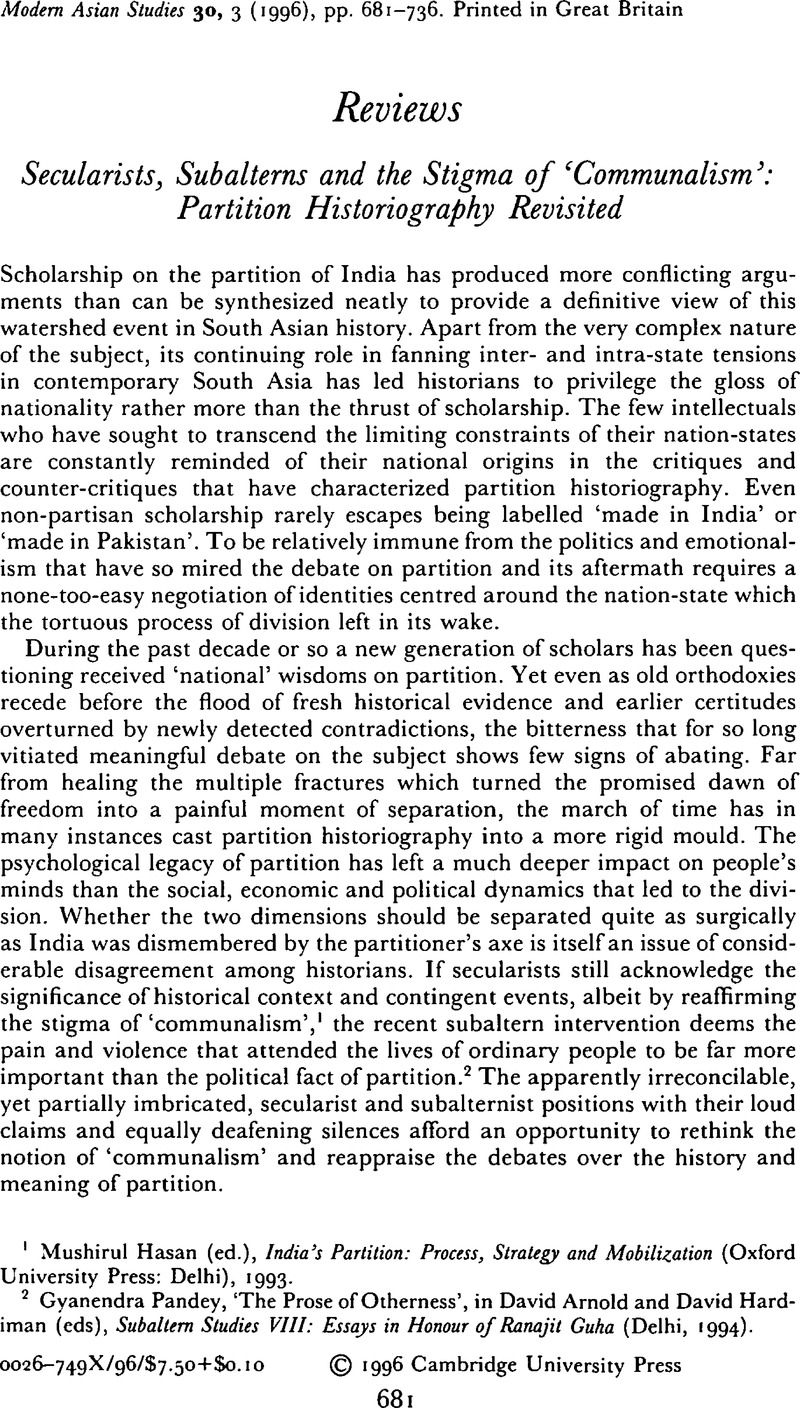Article contents
Secularists, Subalterns and the Stigma of ‘Communalism’:Partition Historiography Revisited
Review products
Published online by Cambridge University Press: 28 November 2008
Abstract

- Type
- Reviews
- Information
- Copyright
- Copyright © Cambridge University Press 1996
References
1 Hasan, Mushirul (ed.), India's Partition: Process, Strategy and Mobilization (Oxford University Press: Delhi), 1993.Google Scholar
2 Gyanendra, Pandey, ‘The Prose of Otherness’, in David, Arnold and David, Hardiman (eds), Subaltern Studies VIII: Essays in Honour of Ranajit Guha (Delhi, 1994).Google Scholar
3 The exclusionary results of Congress's inclusionary and singular nationalist ideology have been analysed in my article ‘Exploding Communalism: the Politics of Muslim Identity in South Asia’ in Sugata, Bose and Ayesha, Jalal (eds), Nationalism, Democracy and Development: Reappraising South Asian States and Politics (forthcoming).Google Scholar
4 Partha, Chatterjee and Gyanendra, Pandey (eds), Subaltern Studies VII (Delhi, 1992).Google Scholar Chatterjee has written persuasively about the ‘subalternity of the Bengali middle class’. Dipesh Chakrabarty in his essay in Subaltern Studies VIII (Delhi, 1994) honestly confesses that he is writing about ‘a small group of people’ belonging to ‘the so-called Hindu bhadralok, the respectable people of the middle classes’ (p. 53).Google Scholar
5 Gyanendra, Pandey, ‘In Defence of the Fragment: Writing about Hindu-Muslim Riots in India Today’, Representations, 37 (Winter, 1992).Google Scholar
6 Noting that demobilized soldiers often played the leading role in the violence directed against the weak and vulnerable is not to consign such events ‘to the realm of an Other history (p. 213)’. It simply means paying a little more attention to the changing historical context. Crimes against women, generally speaking, had not been a key feature of ‘communal violence’ until the upheavals of 1946–1947. For example, there was no violence against women in the Kishoreganj of 1930; but rapes and abductions were common in attacks led by demobilized soldiers in Noakhali and Tippera in 1946.Google Scholar See Sugata, Bose, Agrarian Bengal: Economy, Social Structure and Politics, 1919–1947 (Cambridge, 1986), chapter 6.Google Scholar
- 9
- Cited by


